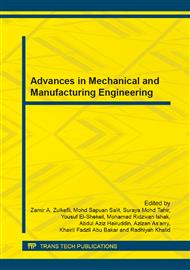p.428
p.434
p.439
p.444
p.449
p.455
p.461
p.469
p.475
Characterisation of Aluminium Matrix Syntactic Foams Dynamic Loading
Abstract:
It is a challenging task to develop a lightweight but also strong material with energy absorption capability to be used in vehicles to withstand impact and blast. This paper reports the research results on Aluminium syntactic foams as possible core materials for protection of military vehicles. In order to optimize their mechanical performance the characterisation of the foam behaviour at high strain rates and identification of the underlying mechanisms have been conducted. Mechanical tests were carried out on syntactic foams under high strain rate compression loading. The drop weight and split Hopkinson pressure bar (SHPB) techniques have been used to obtain data on the material behaviour under dynamic loading conditions. It was found that some samples show 30% higher plateau stress in the drop weight test than that of the quasi-static compression. In addition, it was found that the energy absorption of the aluminium matrix syntactic foam is higher than that of the ordinary aluminium foam. Experimental results from the above investigation are compared with the finite element predictions under the same loading conditions. Reasonably good correlation is obtained. The discussion on developing numerical modelling and the related validation are also given.
Info:
Periodical:
Pages:
449-454
Citation:
Online since:
June 2014
Authors:
Price:
Сopyright:
© 2014 Trans Tech Publications Ltd. All Rights Reserved
Share:
Citation:


